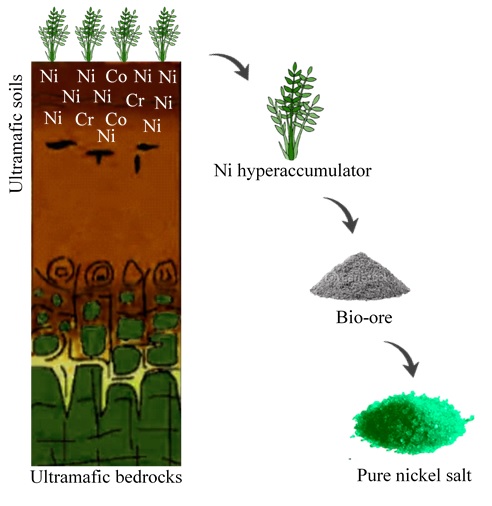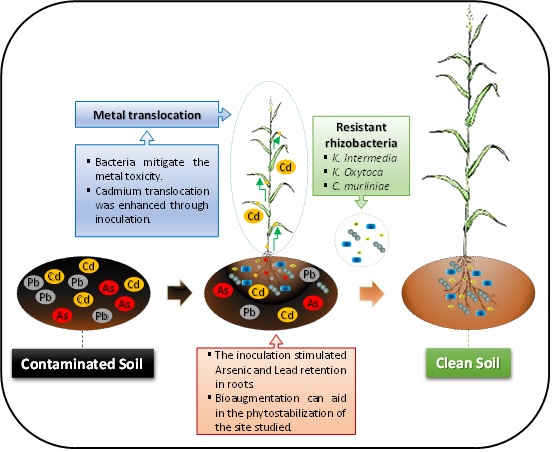Ultramafic soils and nickel phytomining opportunities: A review
07/Apr/2022
ABSTRACT Ultramafic soils are originated from ultramafic rocks such as peridotite and serpentinite and are highly enriched in metals (e.g., Ni, Cr, and Co) and depleted in plant nutrients (e.g., P, K, and Ca). Such characteristics make these soils unfavorable for agriculture and have raised environmental concerns on metal release to the environment. From another perspective, ultramafic soils host a diverse flora with higher endemism than surrounding non-ultramafic areas, which has provided scientists with an opportunity to investigate the evolutionary […]
Bioaugmentation-assisted phytoremediation of As, Cd, and Pb using Sorghum bicolor in a contaminated soil of an abandoned gold ore processing plant
05/Oct/2020
ABSTRACT The two main bottlenecks for a successful phytoremediation program are the metal availability in soil and the metal uptake and transfer to shoots of high biomass plants. Several agronomical practices have been tested to boost the bioavailability of metals in soils and accumulation in plants. Here we assessed the feasibility of plant-growth-promoting bacteria (PGPB) isolated from a site contaminated by gold ore processing activities to assist the phytoremediation of As, Cd, and Pb by Sorghum bicolor and mitigate the […]
Lead desorption and leaching in a spodosol amended with chelant agents
01/Jun/2009
Synthetic chelants used to induce phytoextraction are barely degraded in the soil and pose high environmental risks owing to metal leaching. Natural chelating agents can be an alternative to synthetic chelates thanks to their rapid biodegrability. The study was carried out to evaluate the efficiency of Pb desorption of three synthetic chelators and two natural aliphatic acids from a soil contaminated with Pb from a car battery recycling. Additionally, effects of the amendments on Pb leaching from soil were also […]
Use of Atriplex nummularia and gypsum for phytoremediation of saline-sodic soil
01/Jun/2008
The cultivation of Atriplex nummularia on saline-sodic soils is economically attractive because it can be used as a forage crop as well as in landscape projects. The potential of Atriplex nummularia for phytoextraction of Na+ from a saline-sodic soil irrigated with saline water was evaluated. Additionally, gypsum was tested for improving phytoremediation. The experiment was set up as a randomized block design, in a 2 x 3 factorial scheme. The treatments consisted of: no gypsum and 50 % of the […]


